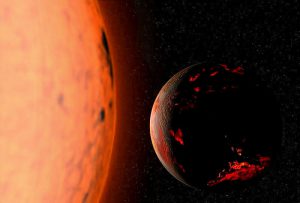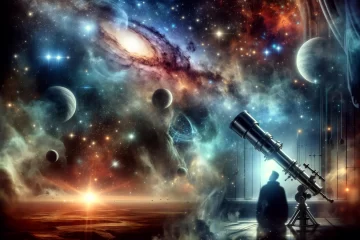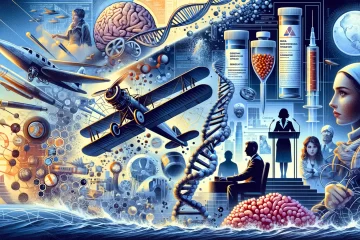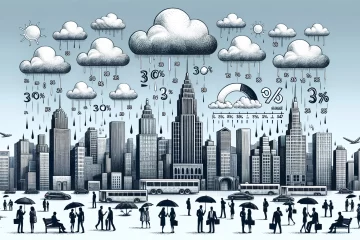How the world is going to end, or at least how human civilization will end, is something that religious folks and wannabe intellectuals talk about all the time. But what is going to end it all? And when will it happen? Rarely is the subject approached with cool logic, educated foresight, and statistical probabilities. We’re going to give it a shot.
Serious folks call an event that could threaten human civilization on Earth an “existential risk”. These risks include:
- anthropogenic (caused by humans)
- technology
- hostile artificial intelligence
- destructive biotechnology or nanotechnology
- nuclear accident
- experimental technology accident
- global governance
- global war
- nuclear holocaust
- bioterrorism using genetically modified organisms
- cyberterrorism destroying critical infrastructure like the electrical grid
- failure to manage a natural pandemic
- global war
- earth system governance
- global warming
- environmental degradation, including extinction of species
- famine as a result of non-equitable resource distribution
- human overpopulation
- crop failures and non-sustainable agriculture
- technology
- non-anthropogenic (natural or external)
- asteroid impact event
- supervolcanic eruption
- lethal gamma-ray burst
- geomagnetic storm destroying electronic equipment
- natural long-term climate change
- hostile extraterrestrial life
An informal 2008 survey of experts at the Global Catastrophic Risk Conference produced this list of probabilities by the year 2100 (from Wikipedia):
| Risk | Estimated probability for human extinction before 2100 |
|---|---|
| Overall probability | 19% |
| Molecular nanotechnology weapons | 5% |
| Superintelligent AI | 5% |
| All wars (including civil wars) | 4% |
| Engineered pandemic | 2% |
| Nuclear wars | 1% |
| Nanotechnology accident | 0.5% |
| Natural pandemic | 0.05% |
| Nuclear terrorism | 0.03% |
 So these might be probabilities on the short end. At the long end, in 600 million years or so, steadily increasing luminosity from the sun is predicted to reduce carbon dioxide levels in the atmosphere to levels that can no longer support photosynthesis, causing the end of plants which will eventually lead to the end of almost all animal life, since plants are the base of the food chain on Earth. In about 1 billion years, this increased luminosity will cause a runaway evaporation of the oceans, and in about 4 billion years, the increase in the Earth’s surface temperature will cause a runaway greenhouse effect, heating the surface enough to melt it. And in about 5 billion years, our sun will turn into a red giant star, expanding to consume Mercury and Venus and cooking Earth to a crisp. Most of Earth’s atmosphere will be lost to space, and the planet’s surface will consist of a lava ocean with floating continents of metals and metal oxides, and eventually Earth will be engulfed by the sun. These natural processes will surely extinguish any human life that happens to remain on Earth. But something else must happen between now and then, right? Something we do to ourselves? There’s even a fun word for human extinction as a result of human action: omnicide.
So these might be probabilities on the short end. At the long end, in 600 million years or so, steadily increasing luminosity from the sun is predicted to reduce carbon dioxide levels in the atmosphere to levels that can no longer support photosynthesis, causing the end of plants which will eventually lead to the end of almost all animal life, since plants are the base of the food chain on Earth. In about 1 billion years, this increased luminosity will cause a runaway evaporation of the oceans, and in about 4 billion years, the increase in the Earth’s surface temperature will cause a runaway greenhouse effect, heating the surface enough to melt it. And in about 5 billion years, our sun will turn into a red giant star, expanding to consume Mercury and Venus and cooking Earth to a crisp. Most of Earth’s atmosphere will be lost to space, and the planet’s surface will consist of a lava ocean with floating continents of metals and metal oxides, and eventually Earth will be engulfed by the sun. These natural processes will surely extinguish any human life that happens to remain on Earth. But something else must happen between now and then, right? Something we do to ourselves? There’s even a fun word for human extinction as a result of human action: omnicide.
People and computers have made some guesses:
- In the early 1970s, a computer program called World1 predicted that civilization would likely collapse by 2040. The computer model was commissioned by the Club of Rome, a group of scientists, industrialists and government officials focused on solving the world’s problems. Researchers from Massachusetts Institute of Technology (MIT) programmed World1 to consider several variables, including pollution levels, population growth, the availability of natural resources, and global quality of life. The model identified 2020 as a tipping point for civilization, the point at which pollution becomes so serious and widespread that it starts to kill people in significant numbers. By around 2040 or 2050, civilized life would cease to exist.
- A newer model called World3 used updated variables to push the collapse of civilization to 2072.
- Philosopher Nick Bostrom argues that it would be “misguided” to assume that the probability of near-term extinction is less than 25%.
- The 2006 Stern Review for the UK Treasury assumes the 100-year probability of human extinction is 10% in its economic calculations.
- A little more optimistically, philosopher John Leslie assigns only a 30% chance of human extinction the next five centuries.
Pollution and climate change will surely affect and likely kill a lot of us, but my feeling is that whatever kills 95%+ of humans on Earth will be sudden and unexpected instead of gradual and foreseeable, simply because humans have shown some ability to take precautionary or at least escapist measures to deal with life-threatening problems that slowly creep up on us.
After reading a bunch and massaging my gut a little bit, I’d put the over/under at the 95%+ destruction of human civilization on Earth at the year 3000. By then, I’m hoping we will have found a way to start colonizing the other planets and sent colony-sustaining ships to the stars.



0 Comments